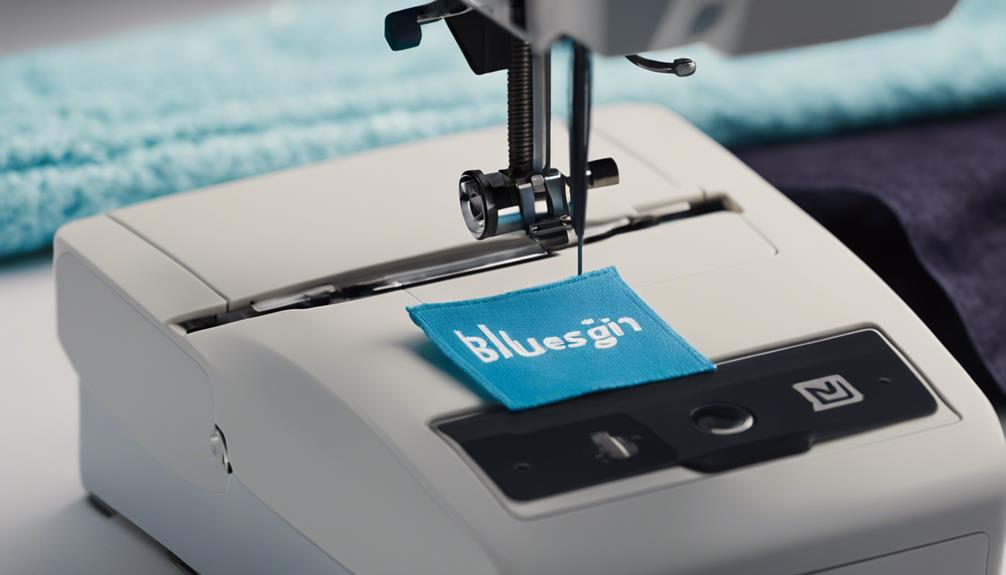Top Sustainable Fashion Design Certifications to Consider
If you're looking to establish your credentials in sustainable fashion design, considering certifications like the Global Organic Textile Standard (GOTS) can set you apart in the industry. These certifications not only validate your commitment to eco-friendly practices but also showcase your dedication to ethical production methods.
As the demand for sustainable fashion continues to rise, having recognized certifications under your belt can open doors to new opportunities and partnerships. The fashion world is evolving, and staying ahead with the right certifications can be the key to making a lasting impact.
Global Organic Textile Standard (GOTS)
If you're considering a certification in sustainable fashion design, the Global Organic Textile Standard (GOTS) provides stringent criteria for organic fibers throughout the supply chain. This certification ensures that environmental impact is minimized by requiring the use of organic fibers that are grown without the use of harmful chemicals and pesticides. By promoting ethical sourcing practices, GOTS also guarantees that the rights of workers are protected, and fair labor practices are upheld.
GOTS certification goes beyond just the final product; it considers the entire production process. From the harvesting of raw materials to the manufacturing of the finished garment, every step is evaluated to meet the highest standards of sustainability and social responsibility. This holistic approach not only benefits the environment but also ensures that the people involved in the production chain are treated fairly and ethically.
Fair Trade Certification
Promoting ethical sourcing practices and ensuring fair compensation for producers, Fair Trade Certification guarantees transparency and accountability in the fashion industry. When you see a fashion item with Fair Trade Certification, you can trust that it has been produced following strict guidelines for ethical production. This certification ensures that workers involved in the making of the garment or accessory are treated fairly and paid a living wage for their work. By prioritizing ethical production, Fair Trade Certification supports communities and empowers workers in the fashion supply chain.
One of the key aspects of Fair Trade Certification is its emphasis on ensuring supply chain transparency. This means that companies seeking this certification must provide detailed information about their suppliers, production processes, and the journey of the product from sourcing raw materials to the final product. As a consumer, this transparency allows you to make informed choices about the products you purchase, knowing that they've been produced in a socially and environmentally responsible manner.
Cradle to Cradle Certified
Cradle to Cradle Certification ensures sustainable and environmentally conscious practices in fashion design. This certification focuses on promoting circular economy practices and material innovation within the fashion industry. By adhering to Cradle to Cradle principles, fashion designers can create products that aren't only stylish but also eco-friendly and socially responsible.
- Circular Economy Practices: Cradle to Cradle Certified products are designed with the intention of being recycled or upcycled at the end of their life cycle. This encourages a circular economy where materials are reused rather than discarded, reducing waste and environmental impact.
- Material Innovation: The certification places a strong emphasis on using innovative materials that are safe for the environment and human health. Designers are encouraged to explore new sustainable materials and production methods that minimize harm to the planet.
- Environmental Consciousness: Cradle to Cradle Certification requires designers to consider the environmental impact of their entire production process, from sourcing raw materials to manufacturing and distribution. This holistic approach ensures that all aspects of the fashion design process are in line with sustainable practices.
OEKO-TEX Standard 100
The 'OEKO-TEX Standard 100' certification ensures the safety of textile products in terms of human health and the environment. This certification is crucial in the textile industry as it focuses on minimizing the environmental impact of textile production. By analyzing every component of a textile product, OEKO-TEX ensures that harmful substances aren't present in any stage of production, from raw materials to the finished item.
In the textile industry, environmental impact is a significant concern due to the extensive use of resources and chemicals. OEKO-TEX Standard 100 addresses this by setting strict criteria for the use of chemicals in textile production, ensuring that only environmentally friendly and safe substances are employed. This certification provides consumers with confidence that the textiles they're purchasing have undergone rigorous testing for harmful substances, promoting a healthier lifestyle and environment.
Leadership in Energy and Environmental Design (LEED)
To further enhance sustainability practices in the fashion industry, consider the Leadership in Energy and Environmental Design (LEED) certification, which focuses on environmentally conscious design and construction principles. Achieving LEED certification for your fashion design projects can help reduce environmental impact and increase energy efficiency. Here are some key aspects of LEED:
- Energy Efficiency: LEED emphasizes the importance of incorporating energy-efficient practices into the design and construction of fashion-related buildings or facilities. By optimizing energy usage, you can minimize your carbon footprint and contribute to a more sustainable future.
- Environmental Impact Assessment: Through LEED, you'll learn how to conduct comprehensive assessments of the environmental impact of your fashion projects. This includes evaluating factors such as material sourcing, manufacturing processes, and waste management to make informed decisions that prioritize sustainability.
- Innovative Design Strategies: LEED encourages the adoption of innovative design strategies that promote sustainability. From utilizing renewable materials to implementing green technologies, LEED certification equips you with the knowledge and tools to create fashion designs that are both eco-friendly and stylish.
Sustainable Apparel Coalition (SAC)
Consider exploring the Sustainable Apparel Coalition (SAC) to delve into sustainable practices within the fashion industry. SAC membership provides access to valuable resources and tools that can guide you in implementing sustainability initiatives effectively. By becoming a member of SAC, you join a community of brands, retailers, manufacturers, and organizations committed to improving the environmental and social performance of their products.
SAC membership offers a platform for collaboration and knowledge-sharing, allowing you to learn from industry leaders and experts in sustainable fashion. Through SAC's initiatives, you can gain insights into best practices, innovative solutions, and the latest trends in sustainability. This can help you align your brand or organization with global standards and drive positive change within the fashion supply chain.
Engaging with SAC's sustainability initiatives enables you to measure, evaluate, and improve the environmental and social impact of your products. By utilizing SAC's tools and resources, you can enhance transparency, traceability, and accountability throughout the production process. This can lead to the development of more sustainable and ethically produced apparel, contributing to a greener and more responsible fashion industry.
Bluesign System

Explore the Bluesign System to understand how sustainable practices are implemented in fashion design certifications. The Bluesign System focuses on sustainable manufacturing and environmental impact assessment to ensure that fashion products are produced in an environmentally friendly and socially responsible manner.
Key Points about the Bluesign System:
- Sustainable Manufacturing: The Bluesign System evaluates the entire production process, from raw materials to the final product, to ensure that sustainable practices are followed. By working closely with manufacturers, it helps reduce the environmental impact of textile production.
- Environmental Impact Assessment: Through rigorous environmental impact assessments, the Bluesign System identifies potential risks and areas for improvement in the manufacturing process. This proactive approach helps companies minimize their ecological footprint.
- Transparency and Traceability: One of the key features of the Bluesign System is its emphasis on transparency and traceability in the supply chain. By tracing materials and processes, it enables brands to make informed decisions and communicate openly about their sustainability efforts.
Zero Discharge of Hazardous Chemicals (ZDHC)
The Zero Discharge of Hazardous Chemicals (ZDHC) initiative focuses on reducing the environmental impact of the fashion industry by eliminating the release of harmful substances into the environment. ZDHC emphasizes chemical management and sustainability practices to address the significant environmental impact of the fashion industry. By promoting the responsible use and elimination of hazardous chemicals in the production process, ZDHC aims to protect ecosystems and human health.
Participating in ZDHC certification can help fashion designers like you align their practices with sustainable principles. By adhering to ZDHC guidelines, you can contribute to reducing the industry's overall environmental footprint. Implementing ZDHC standards in your design processes ensures that your products are manufactured using safer chemicals and with reduced environmental impact, making your brand more environmentally responsible and appealing to conscious consumers.
Understanding the importance of chemical management in fashion is crucial for promoting sustainability throughout the supply chain. By incorporating ZDHC principles into your design certifications, you demonstrate a commitment to reducing the fashion industry's environmental impact. Embracing ZDHC not only benefits the environment and human health but also enhances the reputation of your brand as a leader in sustainable fashion design.
Frequently Asked Questions
Are There Any Specific Requirements or Qualifications Needed in Order to Enroll in These Sustainable Fashion Design Certifications?
To enroll in sustainable fashion design certifications, you may need to meet specific qualification requirements. These can vary, but typically include a background in fashion, design, or related fields.
Some programs may also require a portfolio or relevant work experience. Make sure to review the enrollment criteria for each certification to ensure you meet the necessary qualifications before applying.
How Long Does It Typically Take to Complete One of These Certifications and Receive the Official Designation?
To complete one of these certifications and get the official designation, it usually takes a few months to a year. The time commitment varies based on the program and your availability.
Once you finish, you'll receive official recognition for your sustainable fashion design skills. Make sure to check the specific details of each certification to understand the exact time frame and requirements.
Are There Any Additional Costs Associated With Obtaining and Maintaining These Certifications?
When considering sustainable fashion design certifications, it's essential to factor in cost considerations. Some certifications may have additional expenses associated with obtaining and maintaining them.
It's a good idea to inquire about any financial assistance options that may be available to help cover these costs. Being aware of the potential financial commitments can help you plan accordingly and make informed decisions about pursuing these certifications.
Can These Certifications Be Pursued by Individuals or Are They Primarily Targeted Towards Businesses and Organizations?
When considering sustainable fashion design certifications, you may wonder who can pursue them. These certifications can be individually pursued by anyone interested in enhancing their knowledge and skills in sustainable fashion practices.
While they're beneficial for businesses and organizations, they're also open to individuals seeking to make a positive impact in the fashion industry.
How Widely Recognized and Respected Are These Sustainable Fashion Design Certifications Within the Industry?
In the fashion industry, industry recognition is key. Having a sustainable fashion design certification can significantly boost your career advancement. Employers often value these certifications, as they demonstrate your commitment to sustainable practices.
Recognized and respected certifications can set you apart in a competitive market, opening doors to more opportunities within the industry. Prioritize certifications that hold weight and credibility to maximize their impact on your career trajectory.
Conclusion
When looking to make a positive impact in the world of fashion, consider earning one of these top sustainable fashion design certifications.
By obtaining certifications such as GOTS, Fair Trade, or Cradle to Cradle, you can showcase your commitment to environmental and social responsibility in the fashion industry.
Take the next step in your career by choosing a certification that aligns with your values and helps promote sustainable practices in the fashion world.
